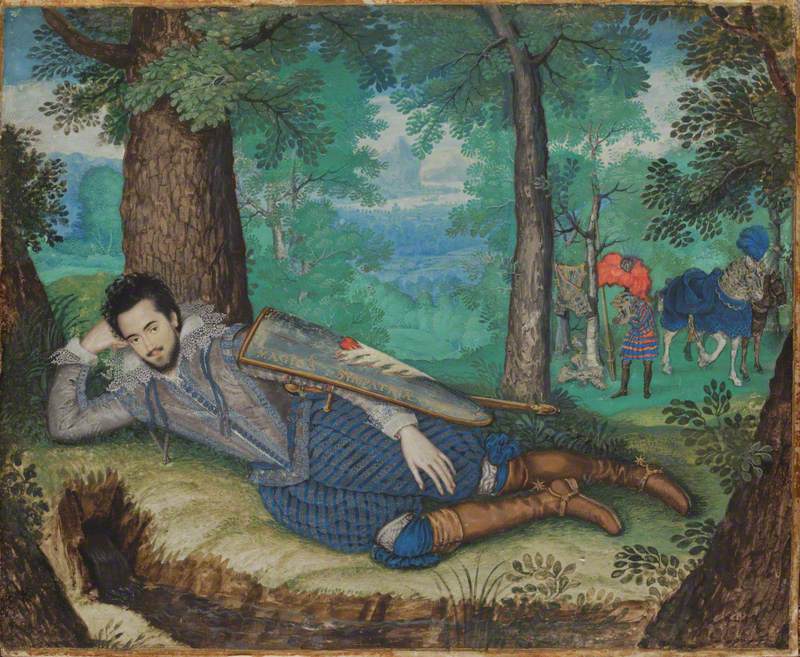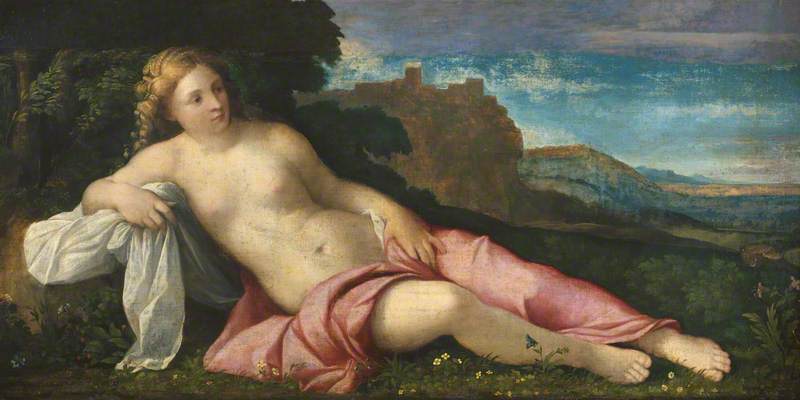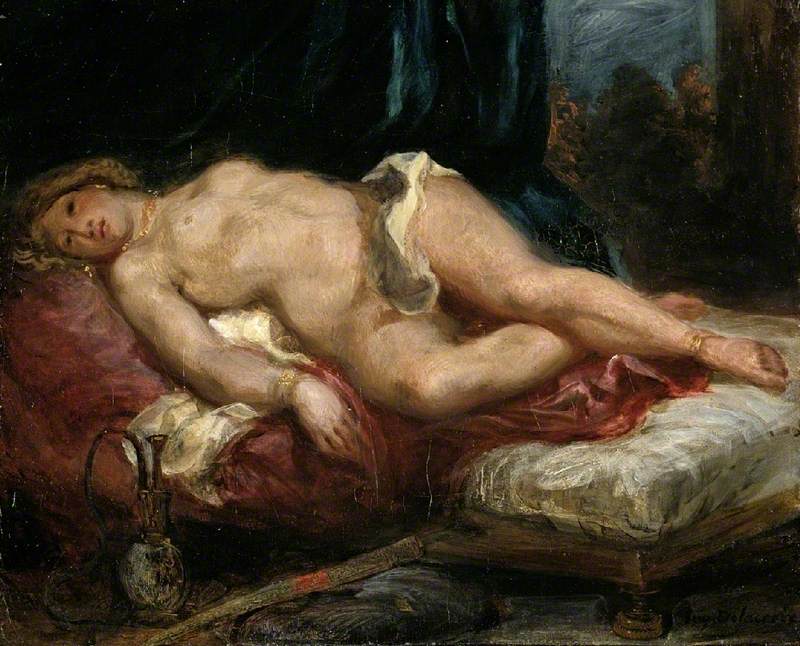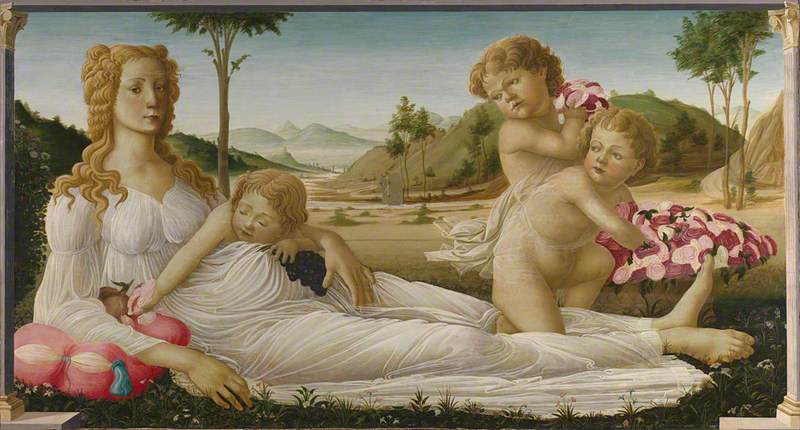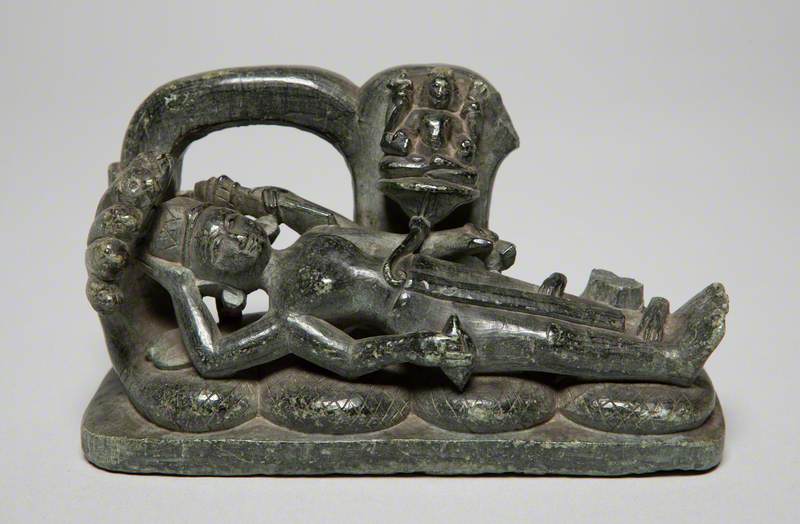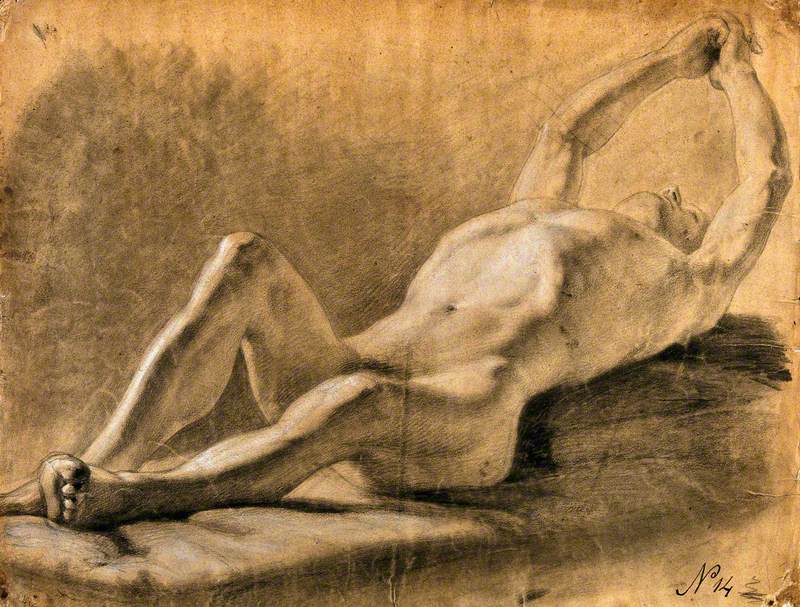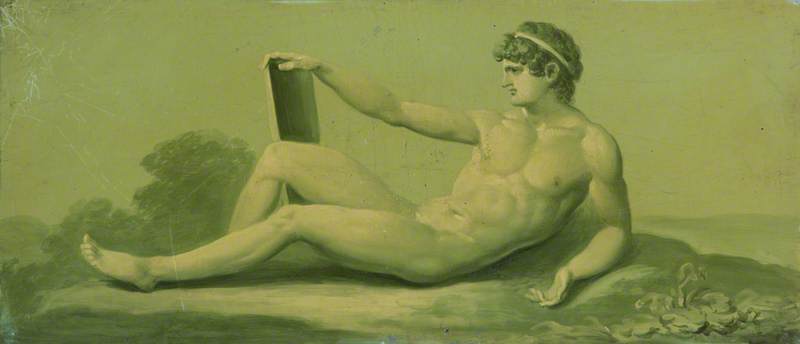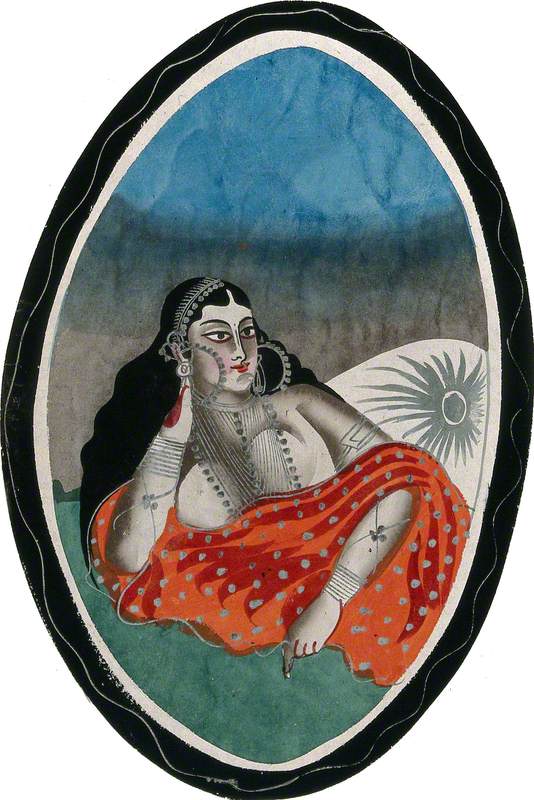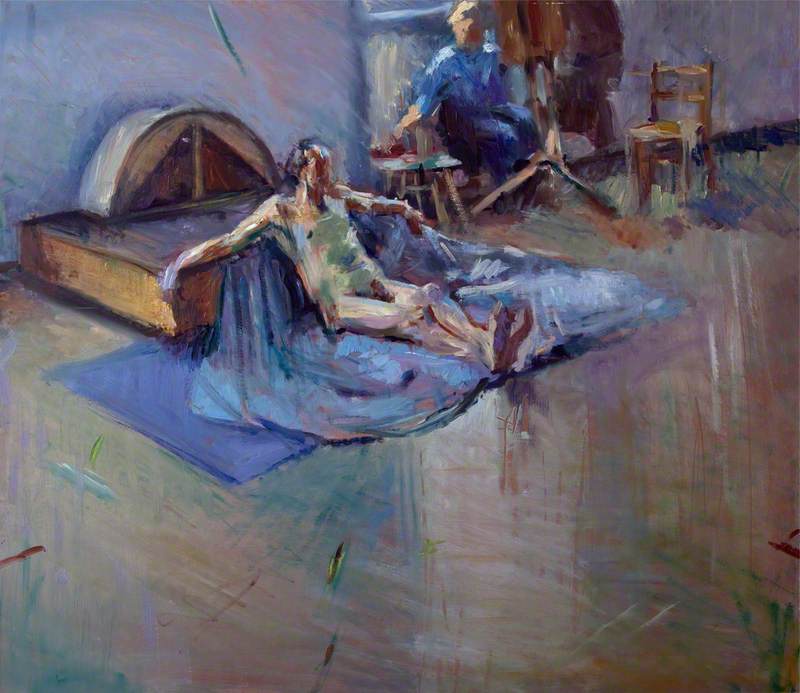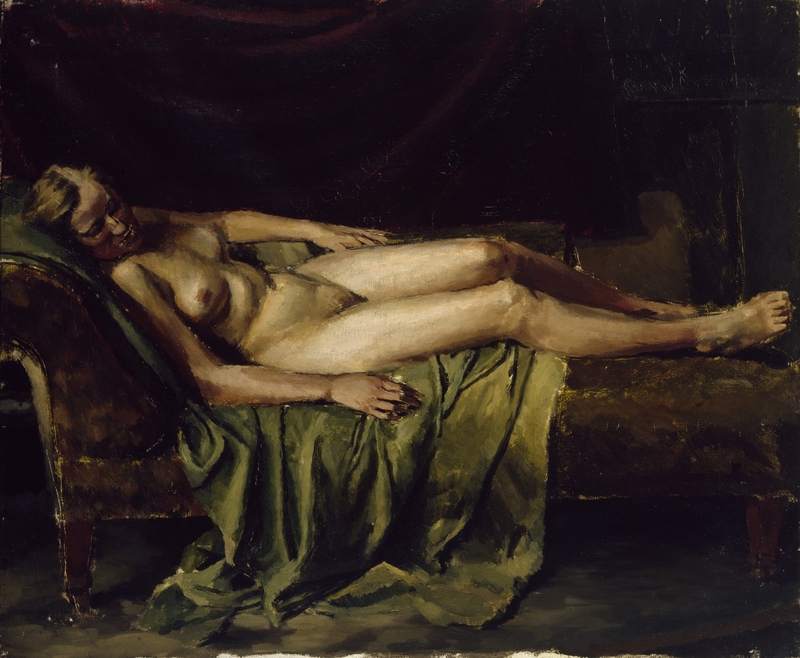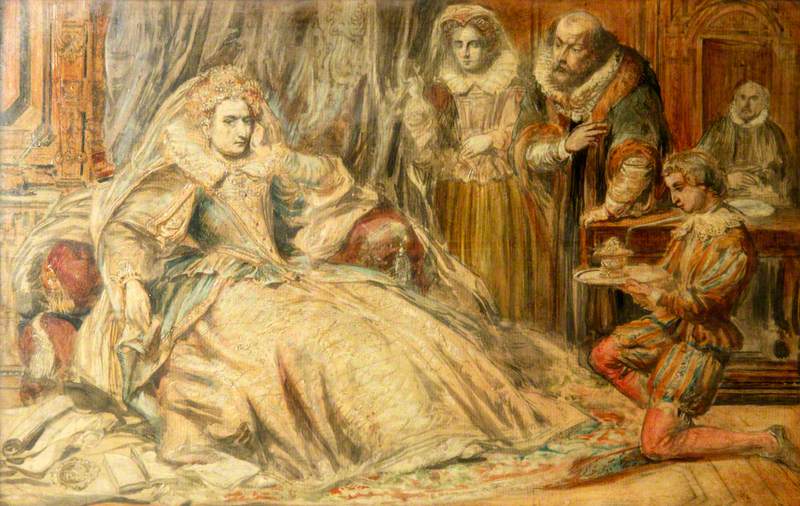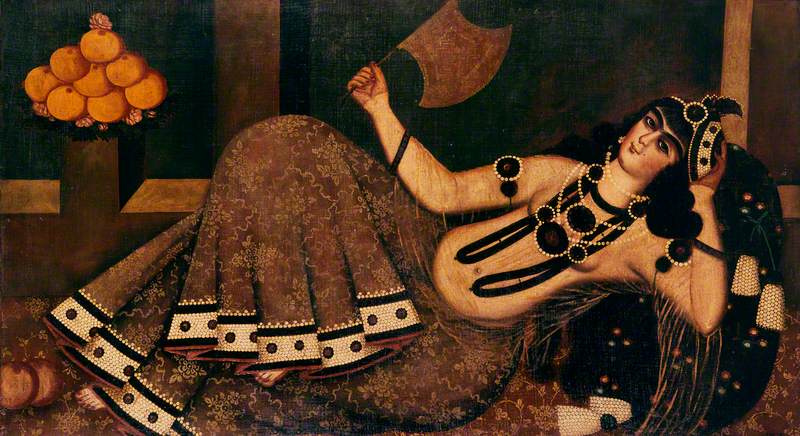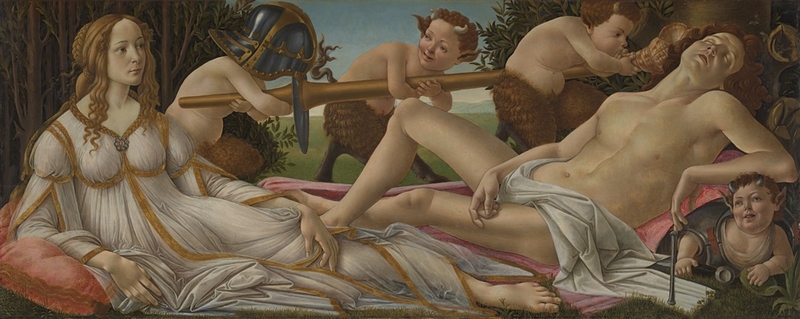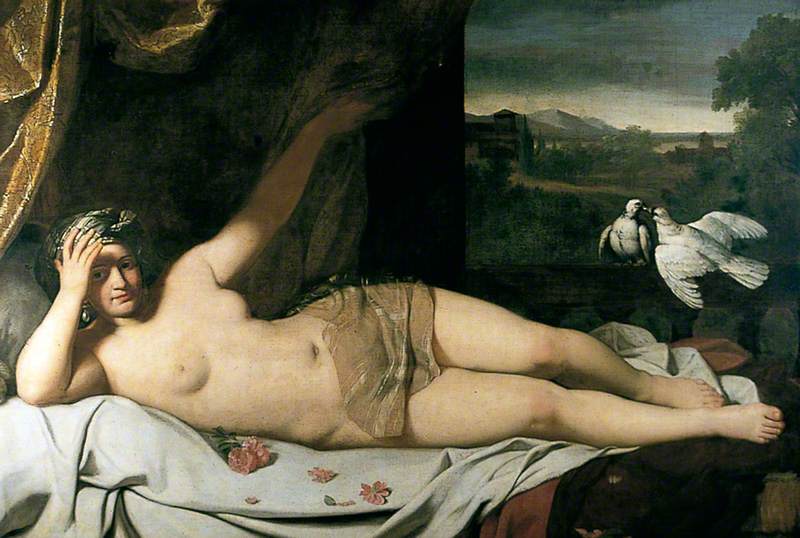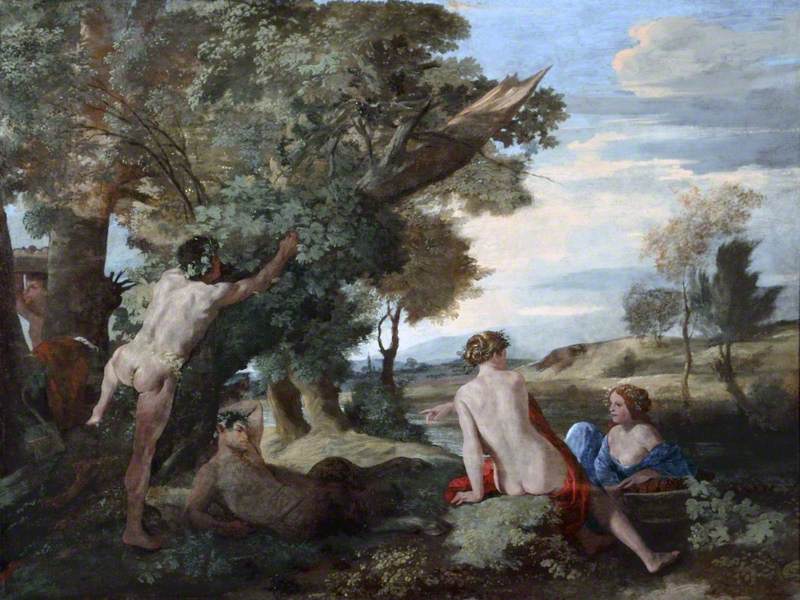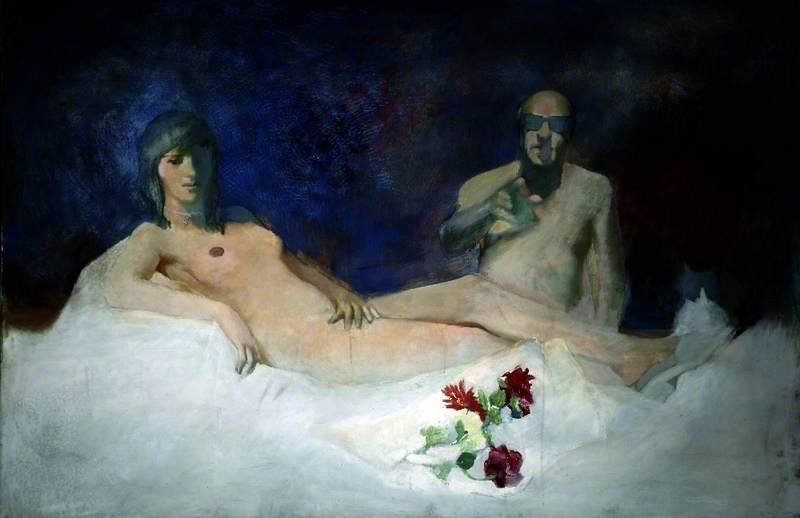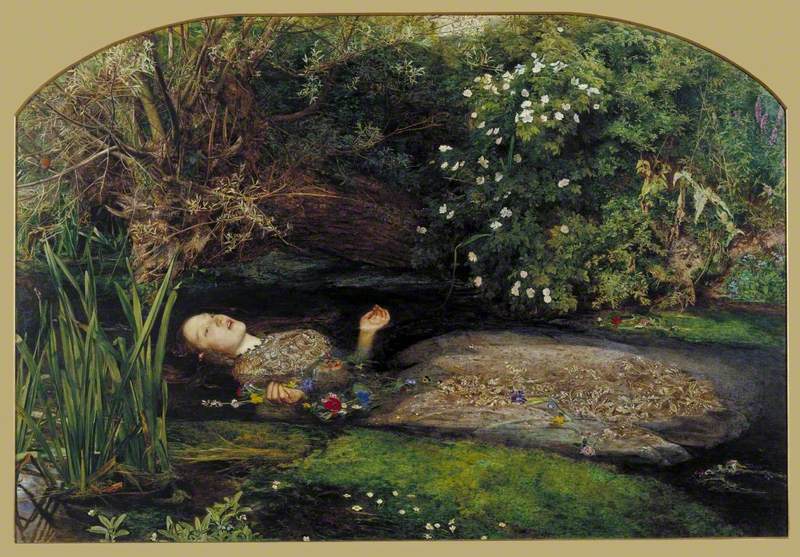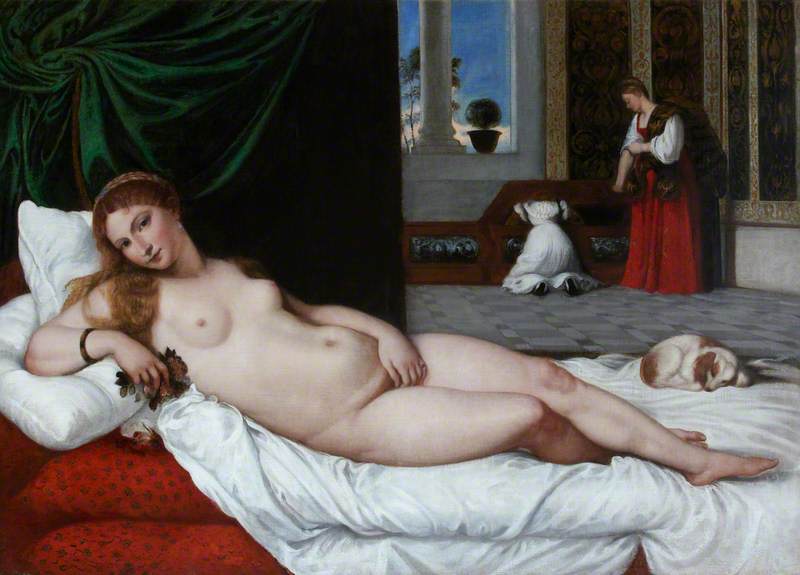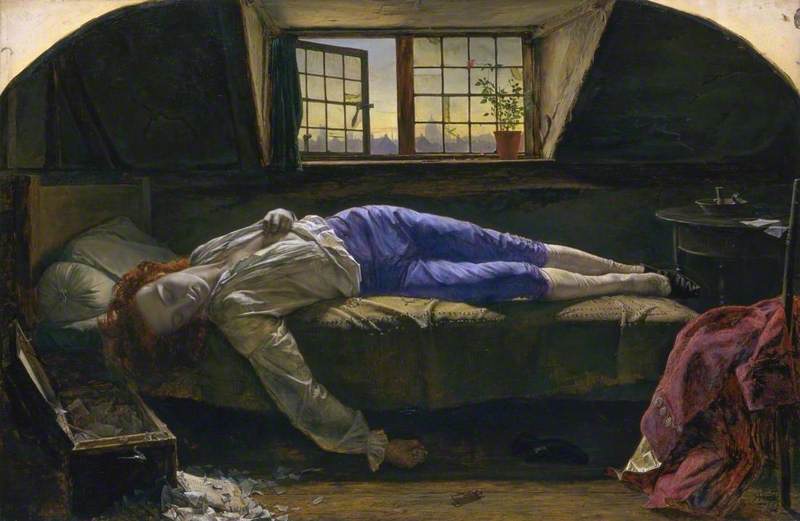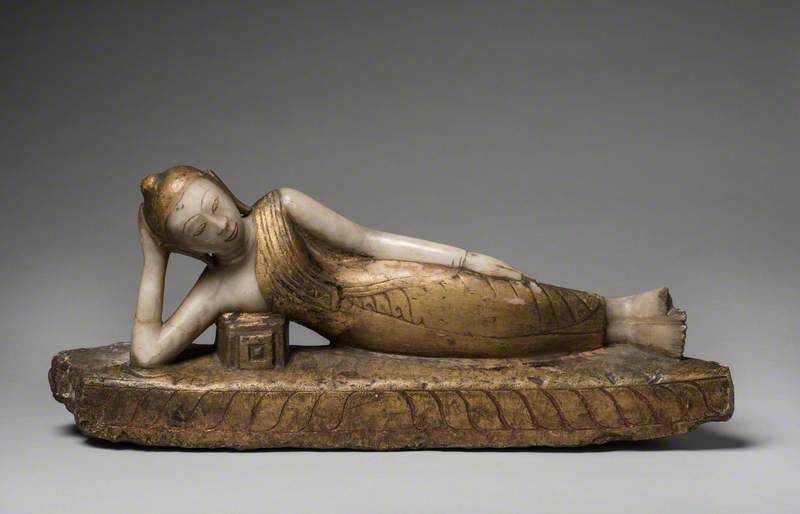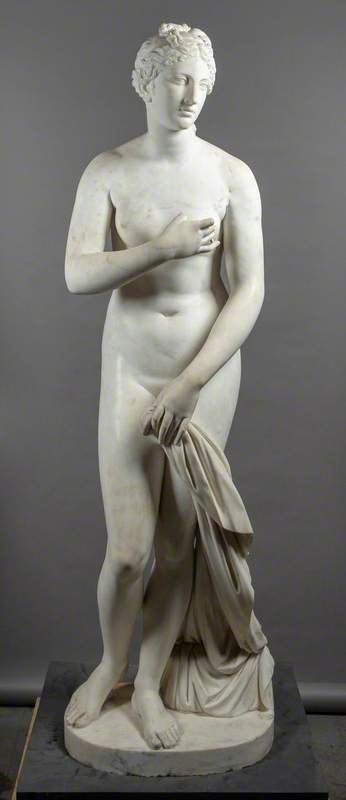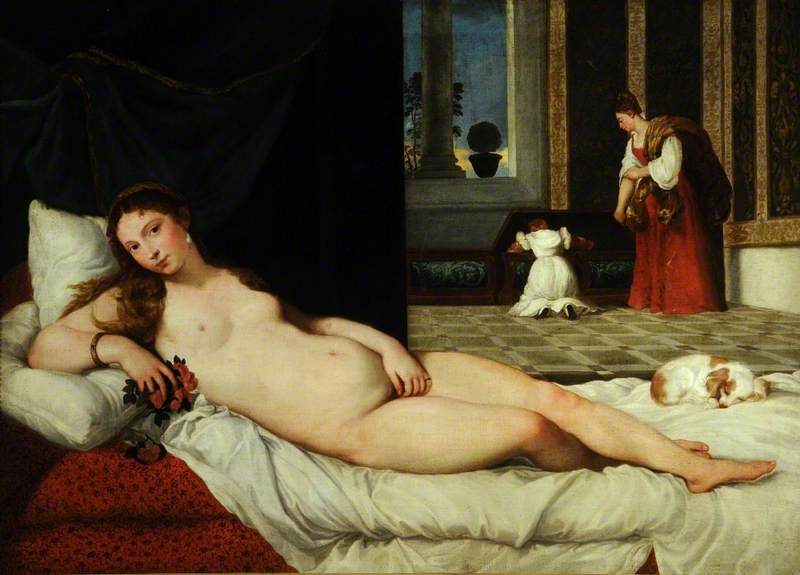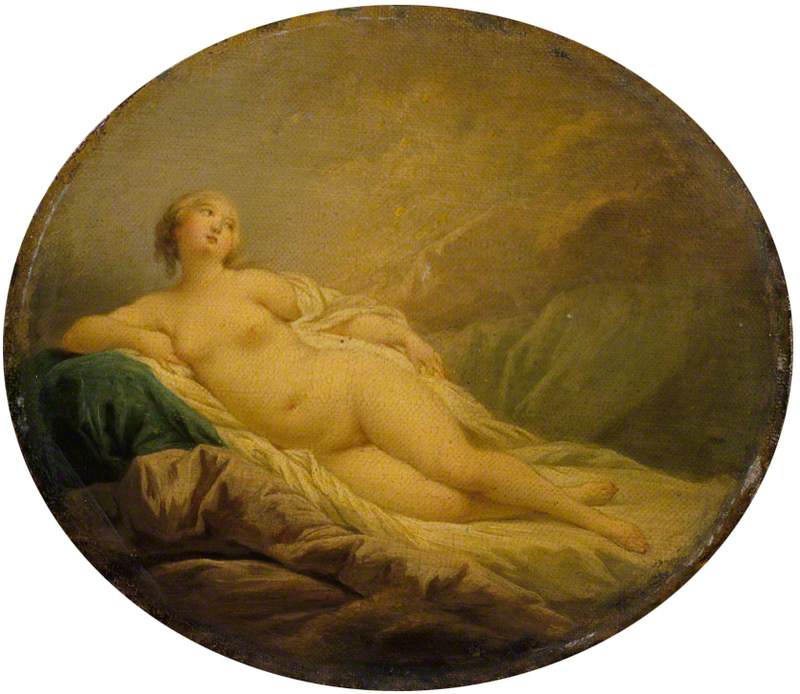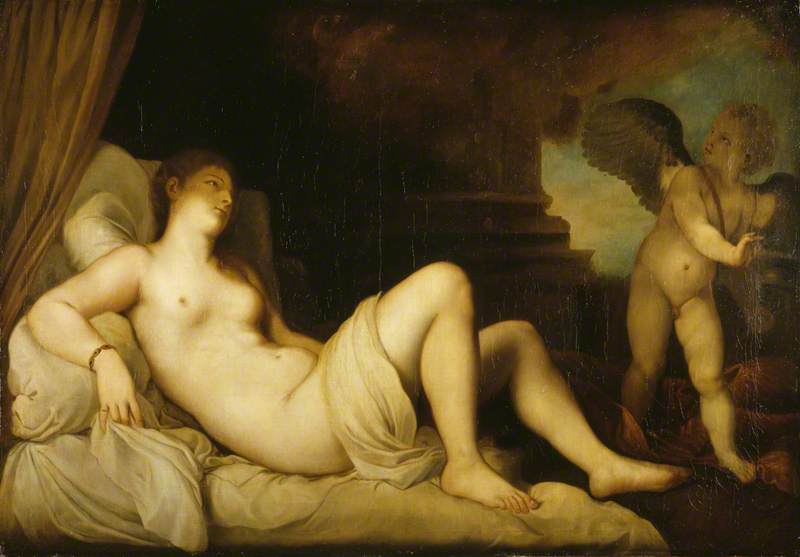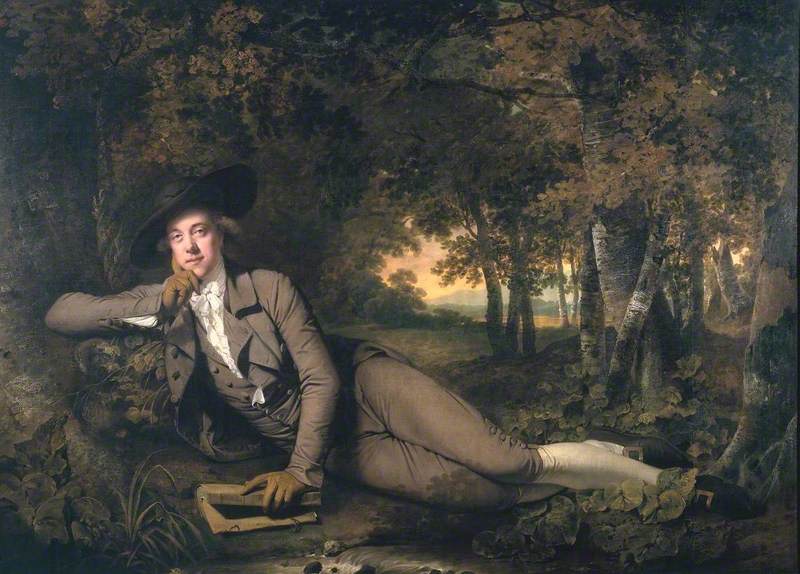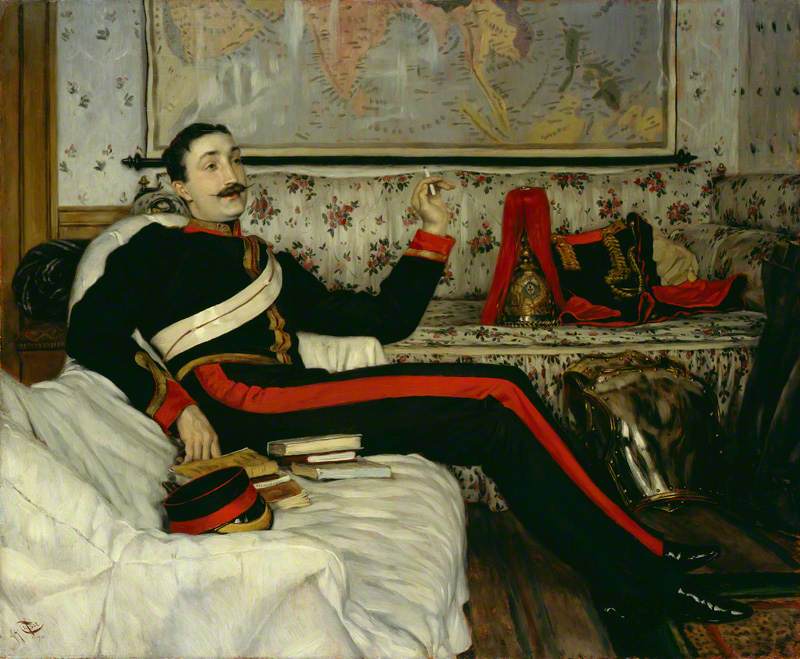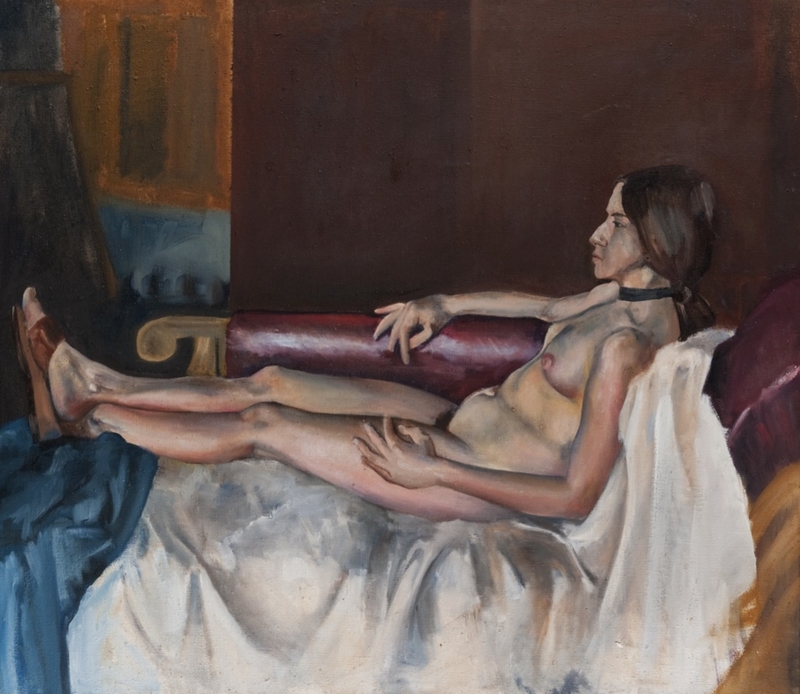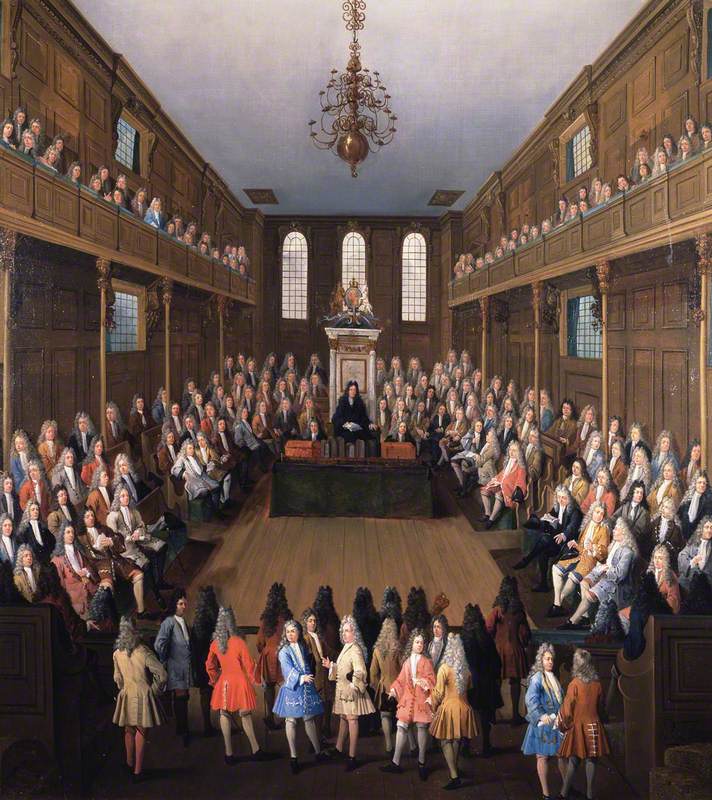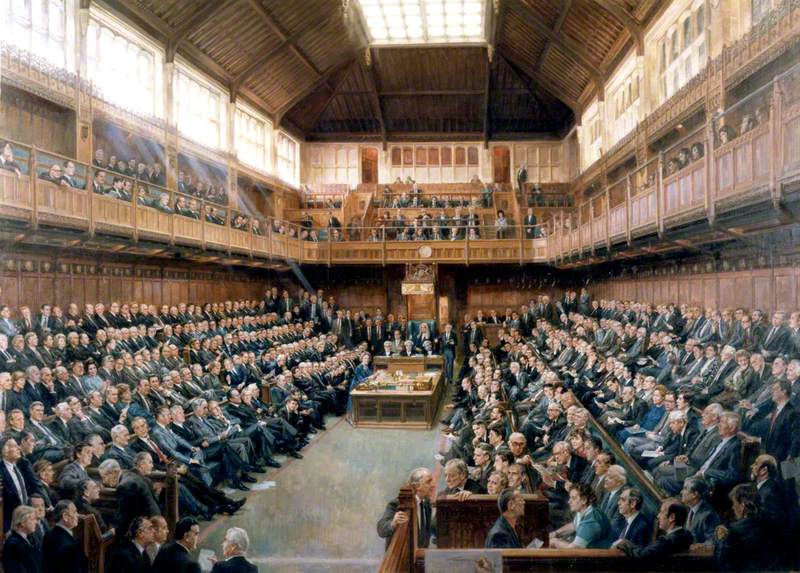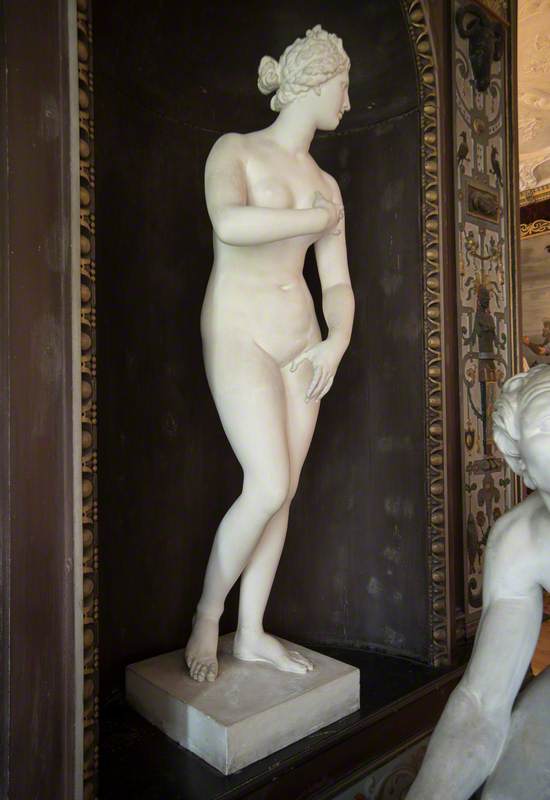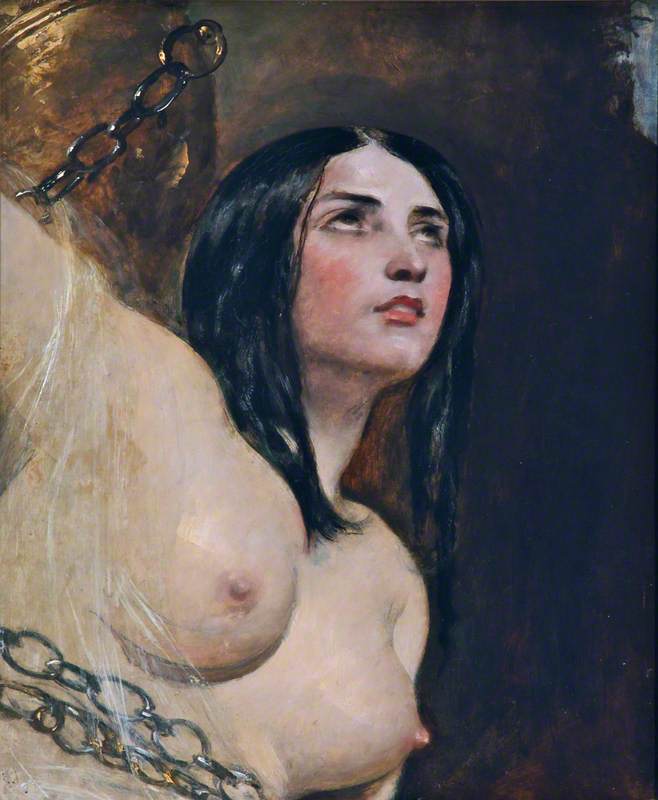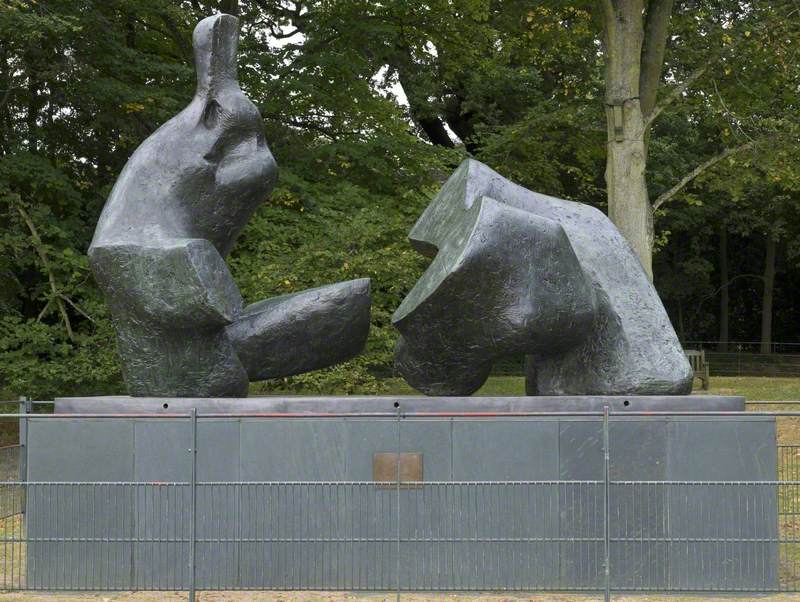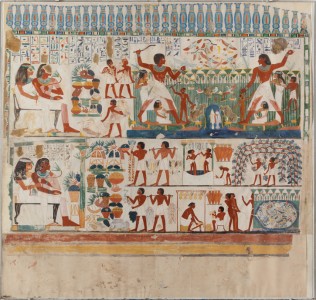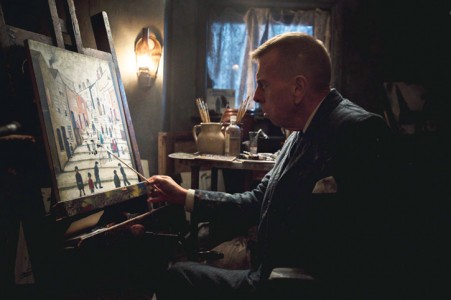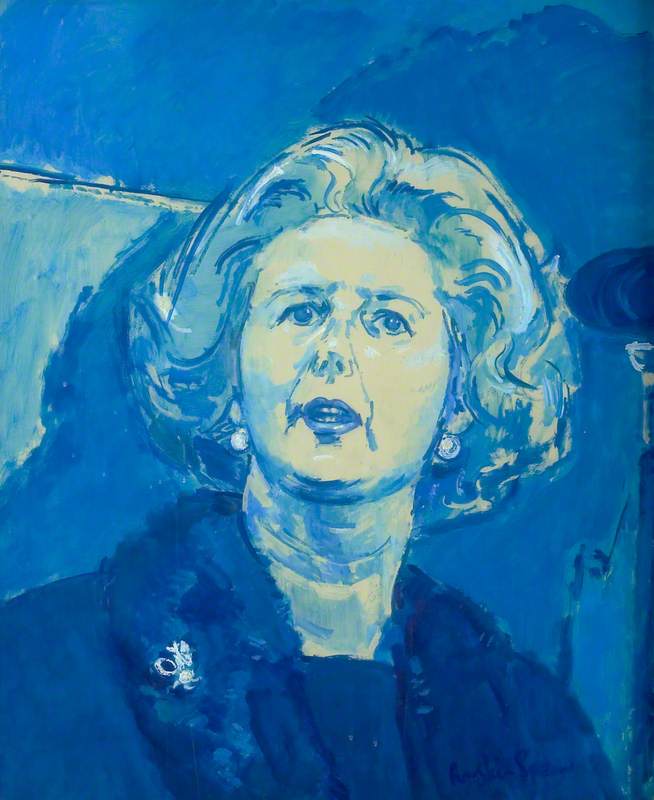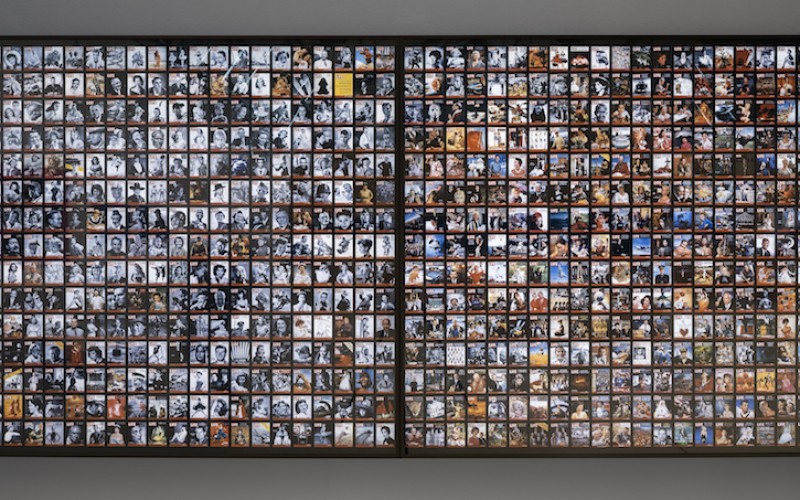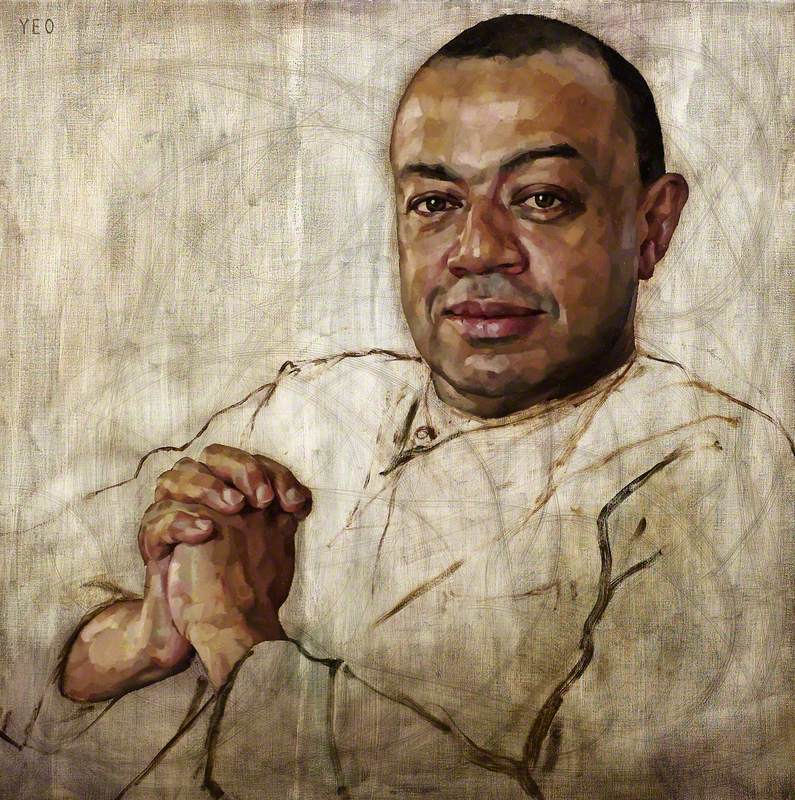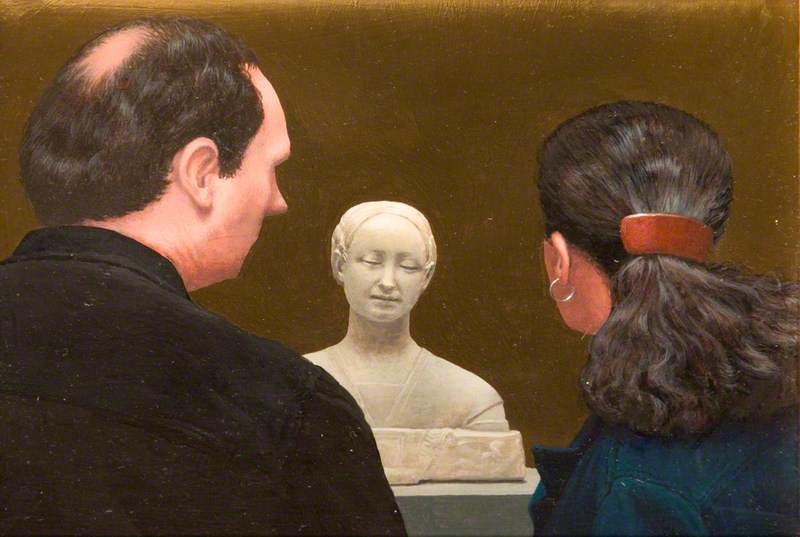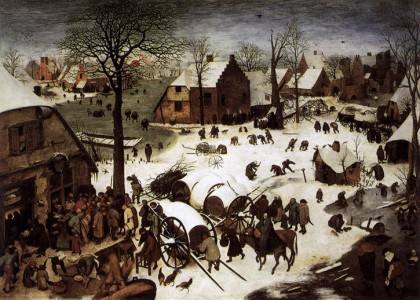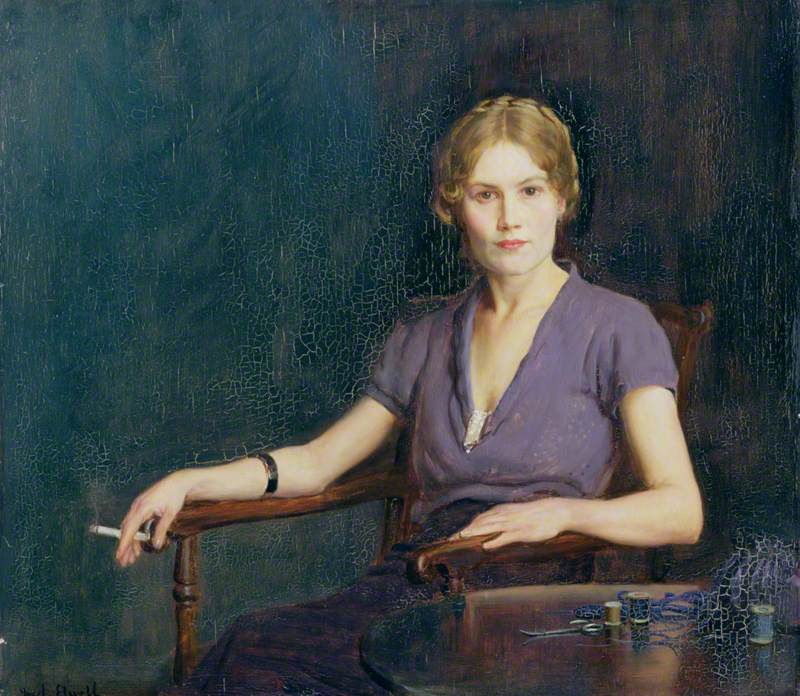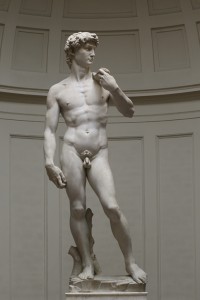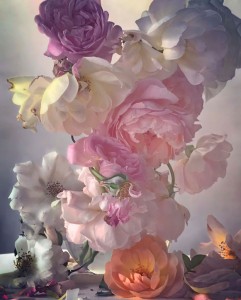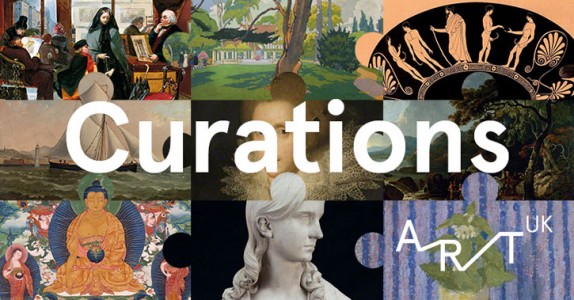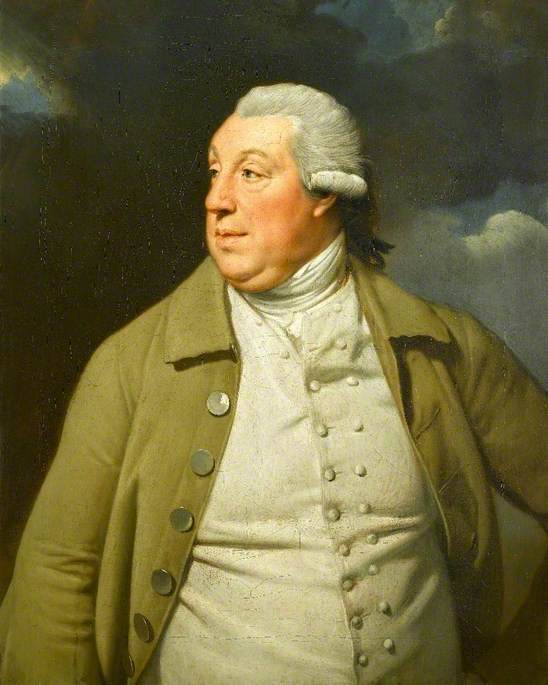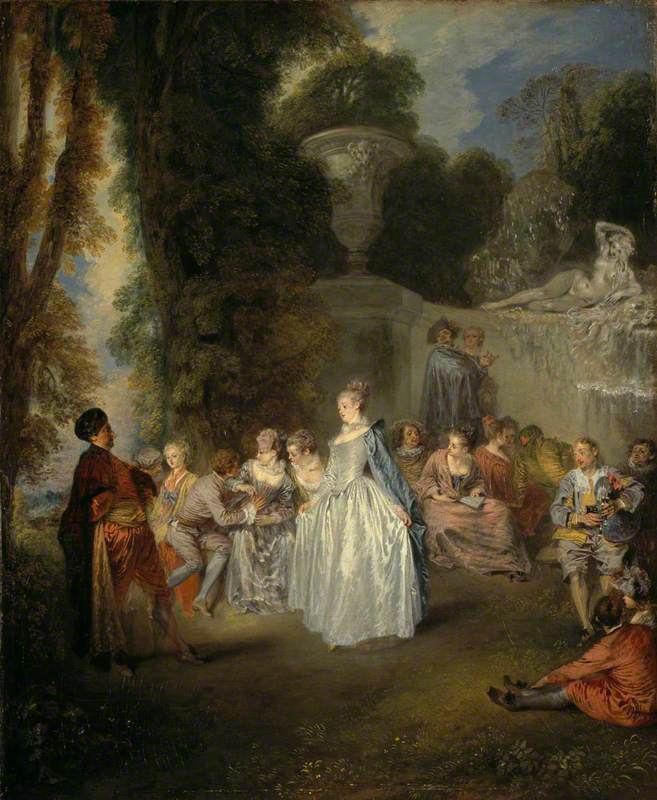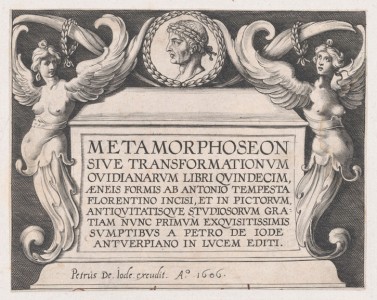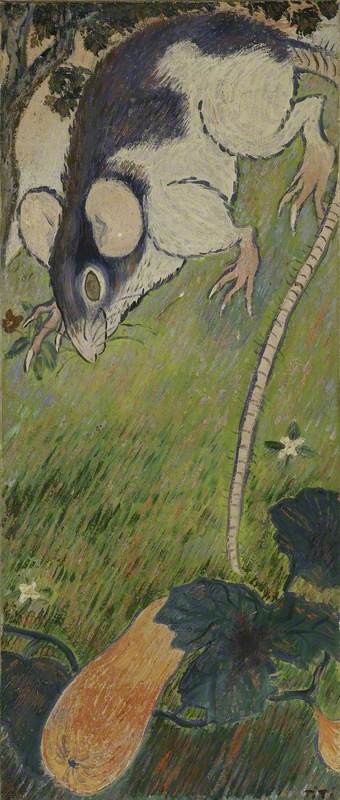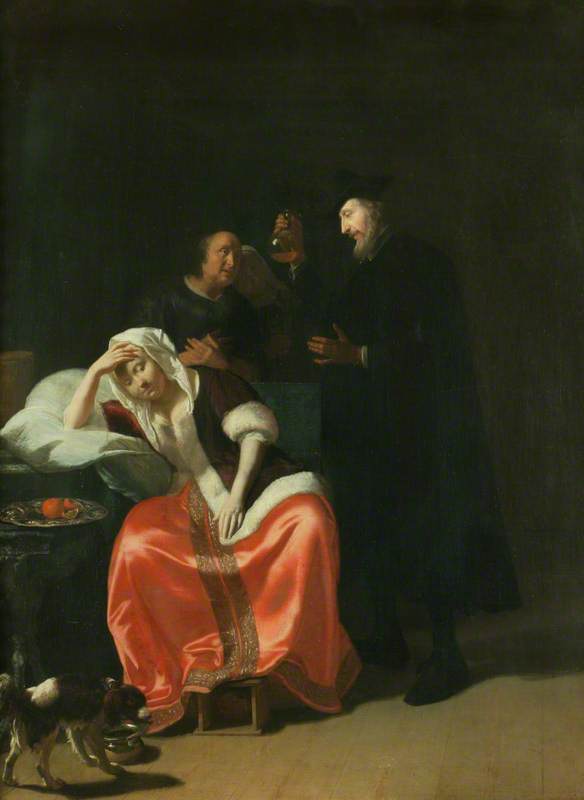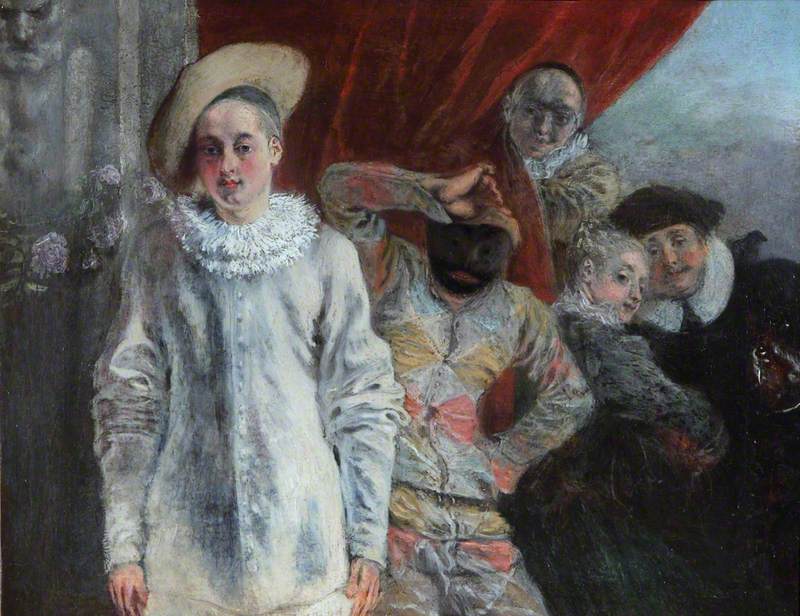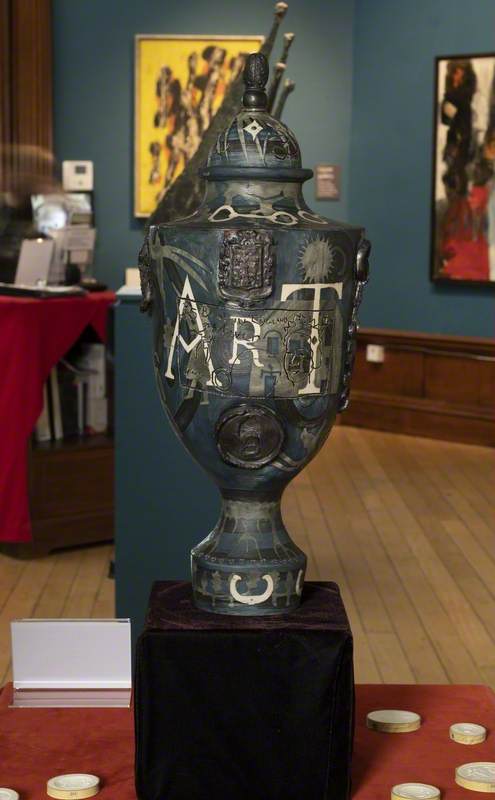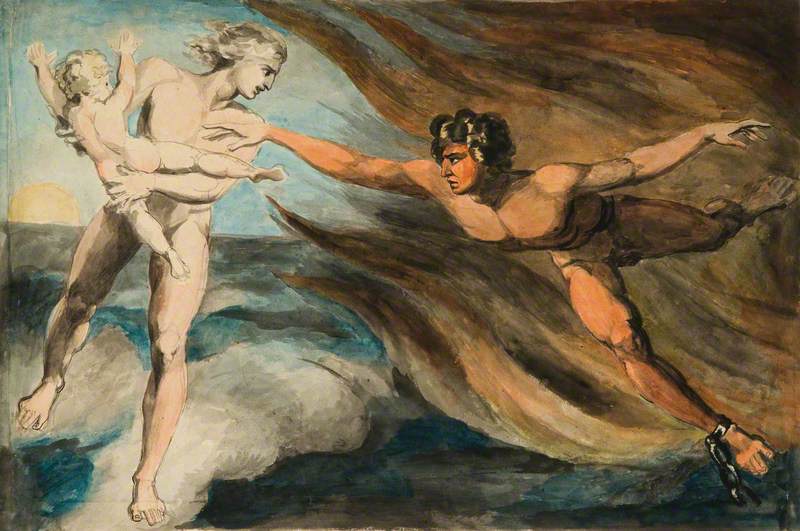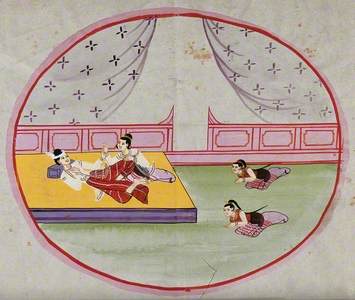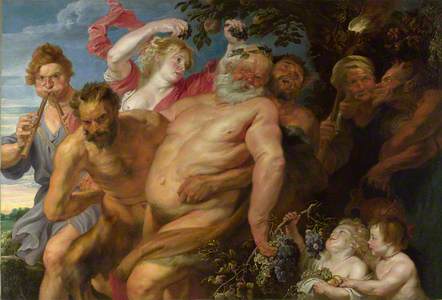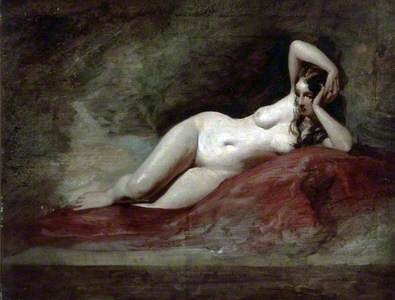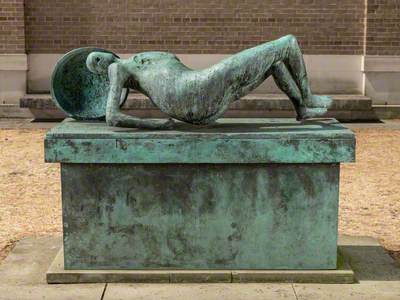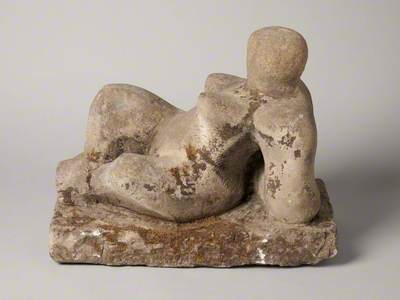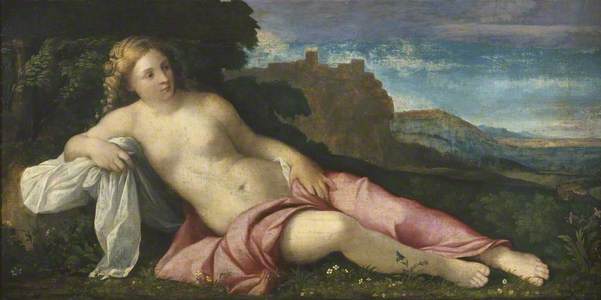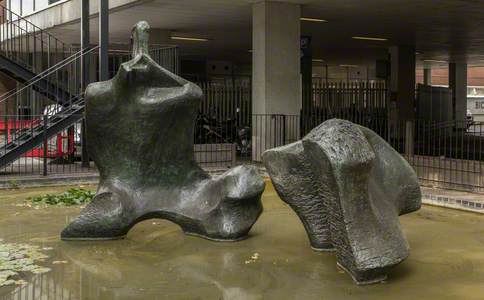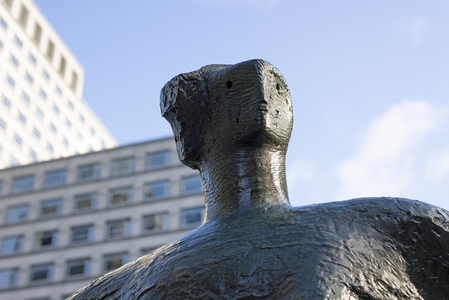On Tuesday 3rd September 2019, MP Anna Turley tweeted a photo from inside the House of Commons of fellow MP Jacob Rees-Mogg reclining on the government benches.
Meme of Jacob Rees-Mogg as Millais' Ophelia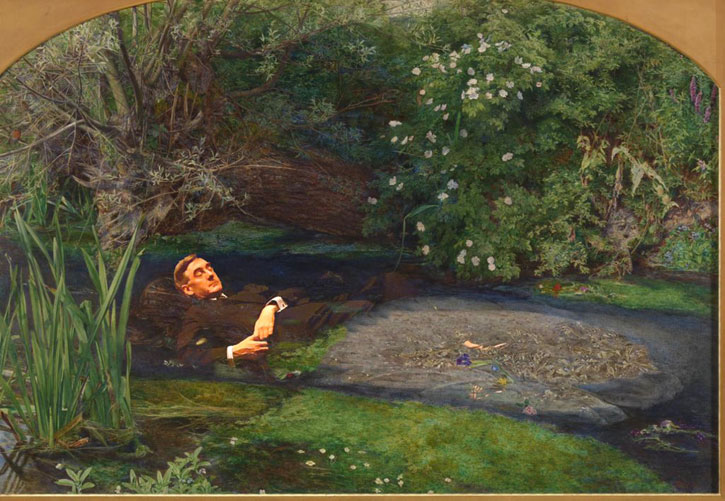
Perhaps unsurprisingly, the image quickly went viral across social media, with countless memes cropping up over the following hours – many of them, such as the one above by Gaz Weetman, referencing works of art in one way or another.
The recumbent posture immediately conjures up a wealth of connotations, from feasting Romans to the sexualised submission of odalisques (concubines) in the harem, and even Henry Moore's semi-abstract sculptures.
Avoiding the political ramifications of this moment, let's turn our gaze to the art historical roots of the reclining figure. So lie back, relax and read on...
The reclining figure is one of the most popular poses in art history. It is firmly embedded within western and eastern art historical traditions.
The reclining Buddha is a major piece of iconography within Buddhist art. The motif represents 'parinirvana', which means the state of being after death by one who has achieved nirvana in life. Typically the Buddha is shown lying on his right side, resting on a cushion and supporting his head with his hand.
Reclining figures have sometimes historically conveyed a sense of entitlement, elite status and power. The posture gives the impression that somebody is being waited upon, attended to, or served.
Two Figures Reclining on a Bed in a Palace while Two Servants Pay Homage, Burma
19th C
unknown artist 
In this work, servants pay homage to two reclining figures in this Burmese watercolour found in the Wellcome Collection.
In the ancient Greek and Roman world, goddesses, nymphs and other divine mythological figures were sometimes portrayed reclining. Typically, the Roman goddess of love, Venus (and her Greek equivalent Aphrodite), appeared in sculpture unclothed, although the most famous examples do not depict her in a horizontal position.
Whether standing or lying down, she is often covering her private parts, known in art as the 'Venus pudica' (modest Venus – although by covering herself she draws attention to those parts).
The Renaissance painter Giorgione (1477–1510) was one of the first to popularise the reclining female nude, in his Sleeping Venus (1508–1510).
This was followed by Titian's 1538 Venus of Urbino, several faithful copies of which are to be found in UK public collections.
The reclining pose can also be a sign of intoxication. Silenus, the companion to Dionysus, the Greek god of wine, is typically portrayed reclining in a state of inebriation (usually supported by a donkey or satyrs).
Drunken Silenus supported by Satyrs
about 1620
Anthony van Dyck (1599–1641) (attributed to) 
Throughout art history, European painters continued to mimic Giorgione's vision of the reclining Venus.
The French Rococo painter Francois Boucher painted the princess Danaë in such a manner. In Ovid's epic poem Metamorphoses, Danaë is a princess imprisoned by her own father, the King of Argos, after he learns a prophecy that he will be killed by the son of his daughter. He locks her up in an attempt to keep her away from suitors.
Following the tradition of most mythological stories, Zeus infiltrates her locked chamber and impregnates Danaë. He arrives in the guise of a golden shower. Therefore, Danaë is typically shown reclining, bathing in golden light. She submissively waits for her doomed fate.
The tradition of portraying figures in a reclining mode continued for centuries. The Italian noblewoman Pauline Borghese – the sister of Napoleon Bonaparte – had herself sculpted in the classical image of a reclining Venus.
Pauline Borghese (née Bonaparte, 1780–1825), Princess Borghese, Sister of Napoleon Bonaparte
c.1840
Antonio Canova (1757–1822) (copy after) 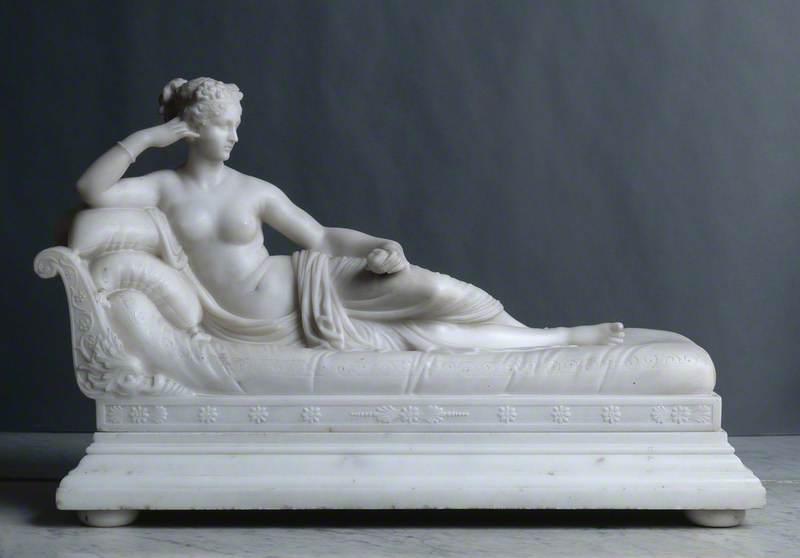
Sir Brooke Boothby was also portrayed in a reclining position when painted by Joseph Wright of Derby in 1781. A member of the English landed gentry, Boothby was an amateur poet and philosopher.
In 1870, James Tissot (1836–1902) created this portrait of Frederick Burnaby. A public schoolboy who then joined the military, Burnaby was a fêted Victorian high society figure. His death at the Battle of Abu Klea took place 15 years after he posed for Tissot.
In the nineteenth and twentieth centuries, artists continued to explore the reclining figure. William Etty painted hundreds of sensual, voluptuous and provocative reclining nudes, for which he was criticised due to their very real, very fleshy appearance. You can read more about Etty's nudes elsewhere on Art UK.
Etty was following in the footsteps of many famous artists, including Goya, who painted two 'Majas', both clothed and nude – but both reclining. You can see both pictures side by side in the Prado in Madrid.
Goya's clothed and naked Majas in the Prado Museum, Madrid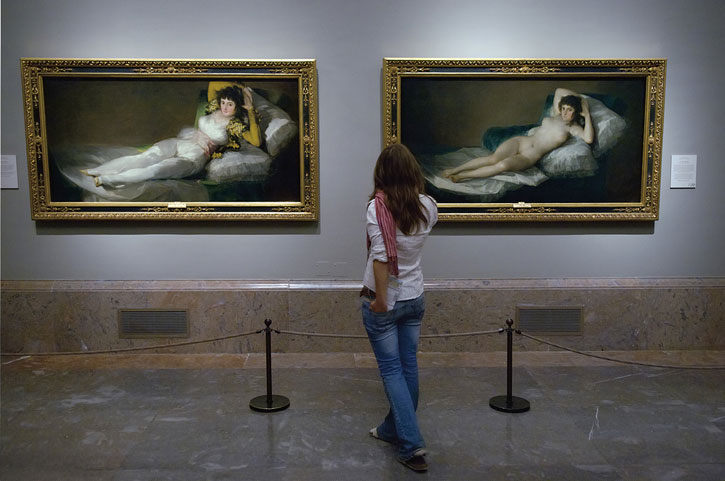
Goya may have been inspired by his compatriot, Velázquez, whose only known surviving female nude is also reclining – now known as 'The Rokeby Venus', it hangs in The National Gallery.
The Toilet of Venus ('The Rokeby Venus')
1647-51
Diego Velázquez (1599–1660) 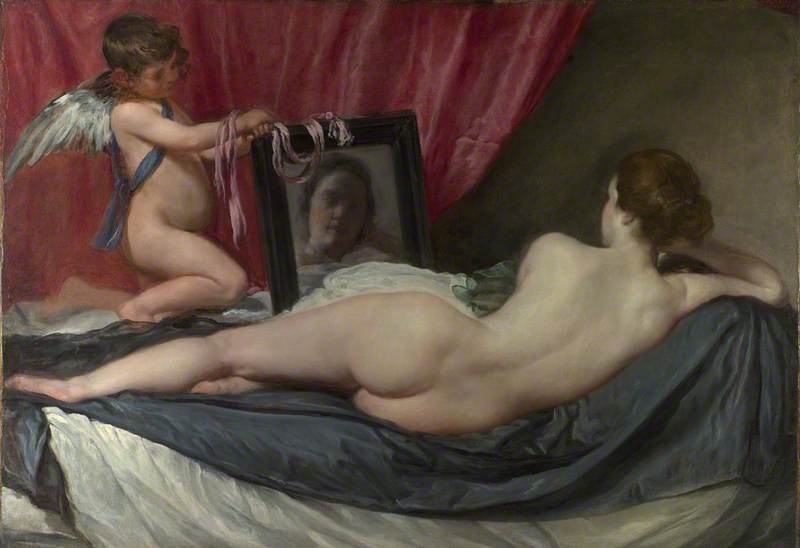
Another incredibly famous painting of a reclining nude, and one that was directly inspired by Titian's Venus of Urbino, is Manet's Olympia. Although the original is in Paris, there are several paintings inspired by Olympia on Art UK – including this one imagining what the pose looks like from the reverse.
The trope of the reclining figure also features heavily the sculptures of Henry Moore, who repeatedly returned to the motif. His recumbent figures were radically modern, yet evoked the classical tradition of representing the reclining figure.
Moore's abstracted, sculpted reclining figures allowed him to draw analogies between the human body and the landscape, inspiring a generation of other artists. This work by George MacCann is similar in form to Moore's.
That's probably enough reclining figures for now. I'm going for a lie down...
Lydia Figes, Content Creator at Art UK, and Andrew Shore, Head of Content at Art UK
